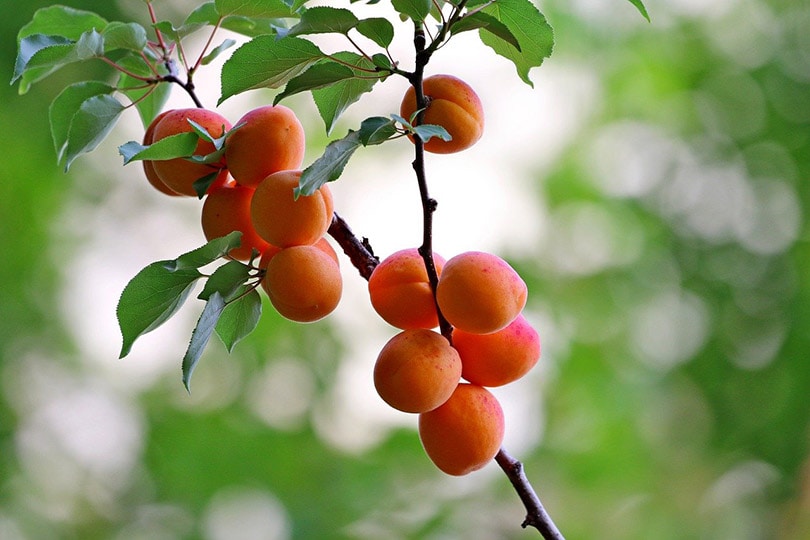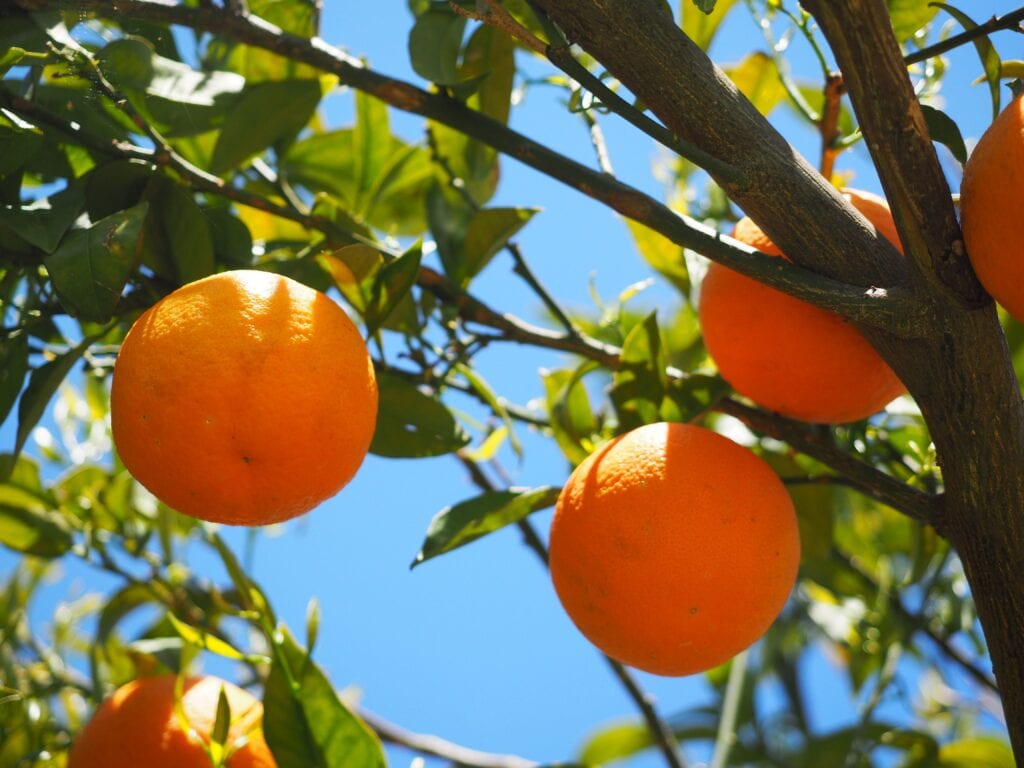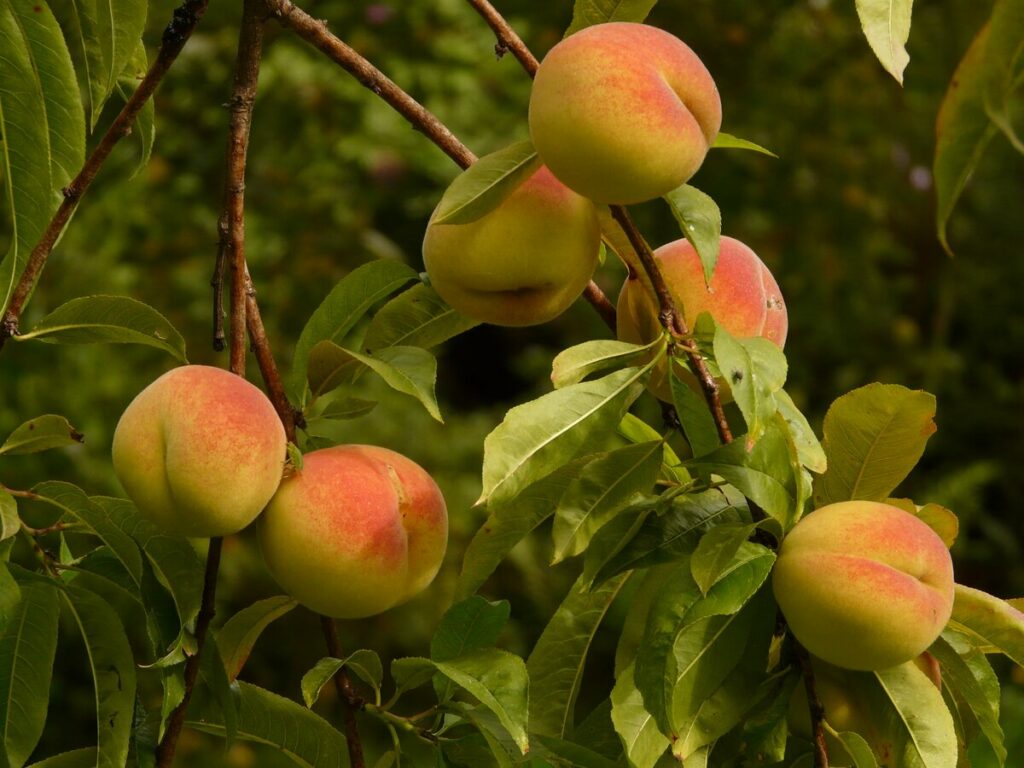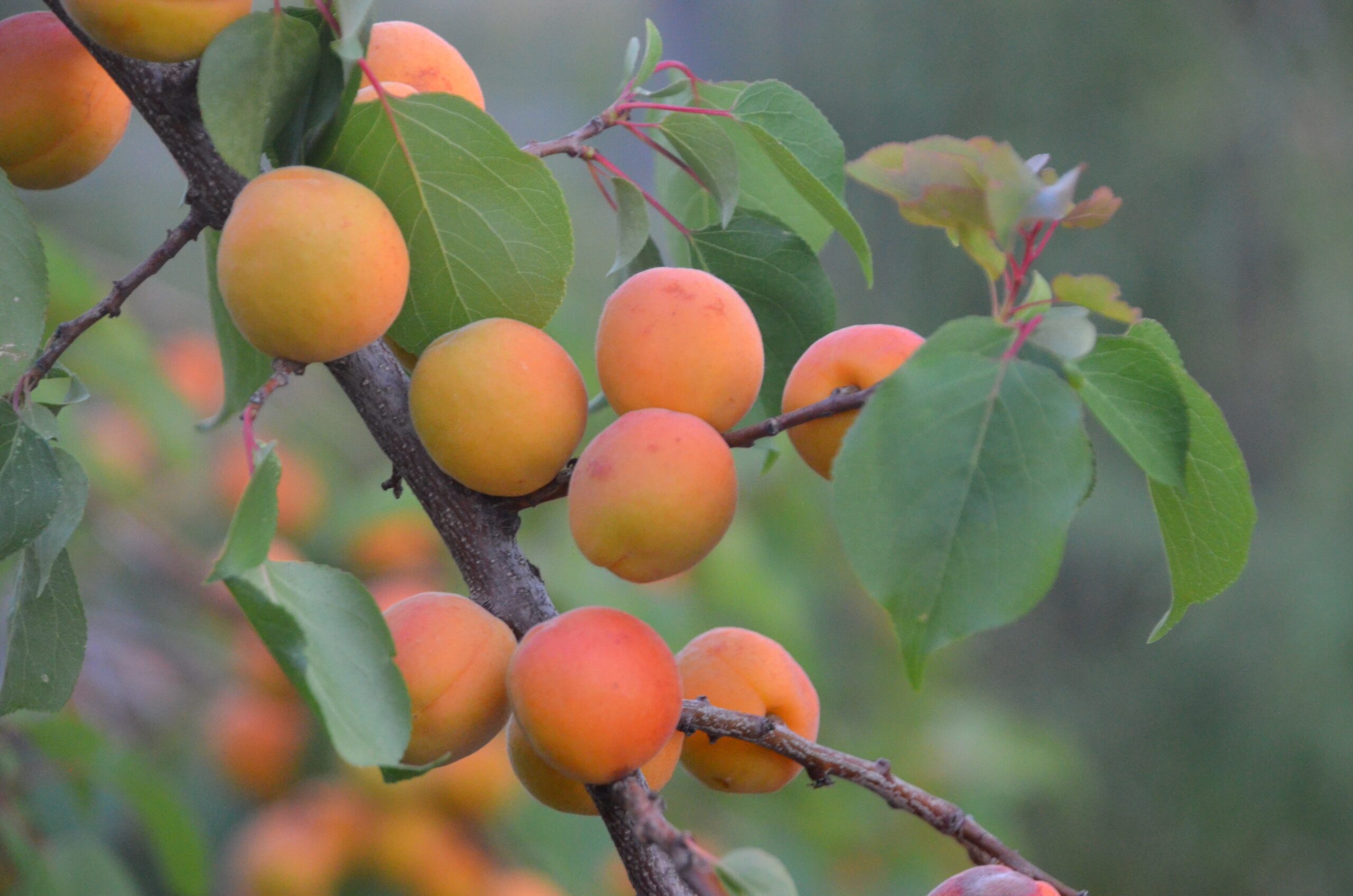14 Different Types of Apricot Trees: With Pictures & Info
-
Kristin Hitchcock
- Last updated:

Apricot trees are not nearly as common as some other fruit trees. However, these fruiting trees are pretty easy to grow and there are several varieties out there. Some of these trees grow better in cooler areas, while others need it to be quite warm. Therefore, you’ll need to consider your climate when determining which variety works best for you.
Your particular goals will matter, as well. Some trees produce fruits that are sweeter than others. Some only grow to a certain size, while others can be quite large. Luckily, because there are so many varieties, you should find something that matches your needs below.
The 14 Different Types of Apricot Trees
1. Golden Sweet Apricot Tree

| Height: | 12–18 feet |
| USDA Hardiness Zone: | 5–8 |
The Golden Sweet Apricot Tree is one of the classic apricot trees that you’re probably familiar with. Many apricots that you purchase at a grocery store come from this type of tree. They grow in most places across the United States (or, at least the continental United States). However, they can get quite tall when fully grown. They are definitely a tree—not a bush.
This tree is self-pollinating, so you only need one of them. Their blooms are a soft white or pink color. You can use the fruit for all sorts of different purposes, including eating and baking.
2. Royal Rosa Apricot Tree

| Height: | 15–18 feet |
| USDA Hardiness Zone: | 7–10 |
This tree is most suitable where it is warmer. It needs fewer cool hours than other trees and is able to survive in warmer conditions. It is also self-pollinating, so you don’t have to purchase more than one tree.
Many describe this tree’s fruits as quite sweet. Therefore, they make great fruits for eating, preserving, and canning. You typically do not use them for baking, though.
3. Harcot Apricot

| Height: | 15–25 feet |
| USDA Hardiness Zone: | 5–8 |
In many ways, the Harcot Apricot is a normal apricot tree. You’ll find it in the same areas as other trees, and their fruits are sweet enough to eat right after picking. It is also self-pollinating, like most apricot trees.
However, this tree is extremely large, reaching up to 25 feet. For this reason, it works best in larger spaces. If you want one large apricot tree instead of several smaller ones, this is the perfect option for you. It does require quite a few chill hours, so it does not work in warmer climates.
4. Flavorella Plumcot
| Height: | 10–18 feet |
| USDA Hardiness Zone: | 5–9 |
This fruit tree is different from other apricot trees, as it has a plum-like flavor. Therefore, it isn’t necessarily an option for those looking for a traditional apricot tree. However, if you like these fruits, then this tree may be a suitable option for you.
They grow moderately large, but not necessarily as large as some other trees. You can eat the fruits right off the vine, as they are rather sweet.
5. Autumn Glo Apricot Tree

| Height: | 12–15 feet |
| USDA Hardiness Zone: | 7–9 |
This classic freestone tree is another great apricot variety. It is very common, so finding saplings for sale is not difficult in the least. Plus, it is also slightly smaller than most other trees out there and can work well in slightly smaller spaces.
You can use the fruits for eating, baking, or canning. The blooms are very pink, more so than the very light blooms of other apricot trees.
6. Golden Kist Apricot Tree

| Height: | 12–19 feet |
| USDA Hardiness Zone: | 5–8 |
The Golden Kist Apricot Tree is best-known as a landscaping tree. If you’re looking for a tree that produces yummy fruits and looks good, it doesn’t get much better than this option. It grows smaller than most apricot trees, though it is still sizeable.
The blooms are a bright pink without the white that often invades other trees’ blooms. Plus, this tree grows quite far north and it can handle colder temperatures. For this reason, we highly recommend it for those in cooler areas.
7. Blenheim Apricot
| Height: | 15–20 feet |
| USDA Hardiness Zone: | 5–9 |
The Blenheim Apricot is a slightly different variant of the Canadian White Blenheim. It grows quite tall, so it only works in larger spaces. Furthermore, it grows in warmer conditions than you may expect, so those closest to the equator may be able to grow this tree.
8. Harglow Apricot Tree

| Height: | 12–15 feet |
| USDA Hardiness Zone: | 4–8 |
The main purpose of this tree is to grow apricots in cooler climates. However, because it can grow in colder places, the fruit this tree produces tends to be extremely sweet. Therefore, they are known as one of the best-tasting apricots around.
If you live in a colder area, this variant is highly recommended.
9. Patterson Apricot Tree
| Height: | 10–15 feet |
| USDA Hardiness Zone: | 4–9 |
Like the Harglow, the Patterson Apricot Tree can grow in cooler temperatures up to zone 4. Fruiting trees can be a challenge to grow in cooler places, but this variant is one of the few exceptions. The fruit isn’t as sweet as some other options, but it can still be utilized for eating and canning.
10. Hunza Apricot Tree
| Height: | 10–15 feet |
| USDA Hardiness Zone: | 4–9 |
This wide-ranging tree can grow all the way from zone 4 to 9. It is somewhat on the smaller side, though it can still reach up to 15 feet in some cases. This variety is more difficult to find, so those in cooler areas often choose a different variety instead. However, if you can get your hands on these trees, they can be fantastic producers.
11. Brittany Gold Apricot Tree

| Height: | 12–15 feet |
| USDA Hardiness Zone: | 5–8 |
The Brittany Gold Apricot Tree is simply an all-around excellent tree. It produces wonderful fruit and grows to a decent height (without being too big). The blooms are pink, which makes them a solid choice for landscaping.
12. Perfection Apricot Tree
| Height: | 6–8 feet |
| USDA Hardiness Zone: | 4–8 |
This apricot tree is another cool-weather tree. However, it’s extremely small when compared to others. Of course, this also means that it makes less fruit. Still, this tree remains a good option for smaller spaces or a tiny orchard with limited space.
This tree produces fruits that are suitable for eating and canning. They are sweet and taste similar to other apricots.
13. Canadian White Blenheim Apricot Tree

| Height: | 12–15 feet |
| USDA Hardiness Zone: | 5–8 |
These classical trees are great in mild climates. Despite the name, they cannot actually grow in cooler climates. Generally, they are a pretty average tree. However, that is exactly what many planters are looking for. They are self-pollinating and produce both white and pink blooms.
14. Wenatchee Apricot Tree

| Height: | 12–18 feet |
| USDA Hardiness Zone: | 5–9 |
Usually, this tree works best for northern gardeners that are looking for a reliable tree that produces lots of fruit. These trees can grow quite large, so they tend to produce more fruit than others. Their apricots are tasty and can be eaten right off of the tree.
Unlike most apricot trees, these produce white blooms only.
In Conclusion
Apricot trees vary quite a bit. Some are suitable for warmer climates, while others grow in cooler areas. Usually, they produce blossoms of pink or white. However, the exact color also tends to vary. Some of these trees are surprisingly small, though others can grow to many feet tall.
It can be challenging to find the right apricot tree for your needs. However, they mostly vary in hardiness and height. If you can find a tree that matches those two needs, then you’ll likely be good.
Featured Image Credit: Flora Westbrook, Pexels
Contents
